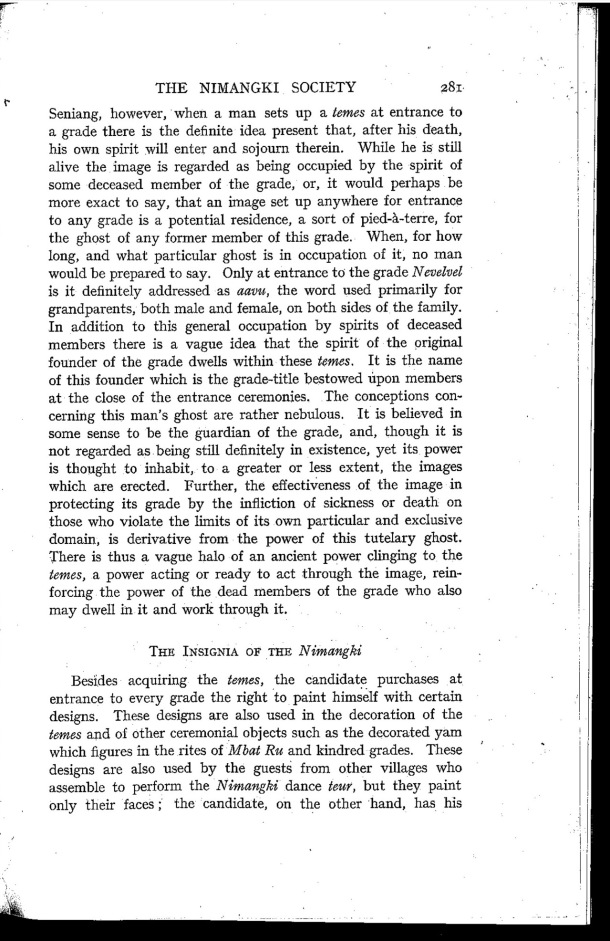|
|  [Note: this transcription was produced by an automatic OCR engine]
THE NIMANGKI SOCIETY 281
Seniang, however, when a man sets up a temes at entrance to
a grade there is the deï¬Ånite idea present that, after his death,
his own spirit will enter and sojourn therein. While he is still
alive the image is regarded as being occupied by the spirit of
some deceased member of the grade, or, it would perhaps be
more exact to say, that an image set up anywhere for entrance
to any grade is a potential residence, a sort of pied-a-terre, for
the ghost of any former member of this grade. When, for how
long, and what particular ghost is in occupation of it, no man
would be prepared to say. Only at entrance to the grade N evelvel
is it deï¬Ånitely addressed as aavu, the word used primarily for
GRANDPARENTS, both male and female, on both sides of the family.
In addition to this general occupation by spirits of deceased
members there is a vague idea that the spirit of the original
founder of the grade dwells within these llamas. It is the name
of this founder which is the grade-title bestowed upon members
at the close of the entrance ceremonies. The conceptions con-
cerning this man's ghost are rather nebulous. It is believed in
some sense to be the guardian of the grade, and, though it is
not regarded as being still deï¬Ånitely in existence, yet its power
is thought to inhabit, to a greater or less extent, the images
which are erected. Further, the effectiveness of the image in
protecting its grade by the infliction of sickness or death on
those who violate the limits of its own particular and exclusive
domain, is derivative from the power of this tutelary ghost.
There is thus a vague halo of an ancient power clinging to the
temes, a power acting or ready to act through the image, rein-
forcing the power of the dead members of the grade who also
may dwell in it and work through it.
TI-IE INSIGNIA or T1-IE Nimnmgki
Besides acquiring the temes, the candidate purchases at
entrance to every grade the right to paint himself with certain
designs. These designs are also used in the decoration of the
temes and of other ceremonial objects such as the decorated yam
which ï¬Ågures in the rites of M bat Ru and kindred grades. These
designs are also used by the guests from other villages who
assemble to perform the Nimangki dance teur, but they paint
only their faces; the candidate, on the other ‘hand, has his
‘v
:
I
|